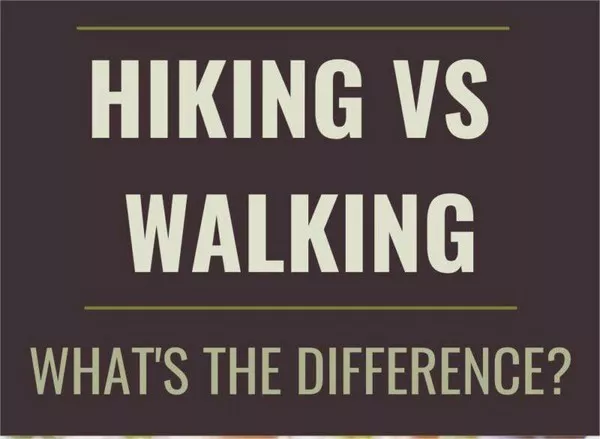In the realm of outdoor activities, both walking and hiking offer wonderful opportunities to connect with nature, improve fitness, and clear the mind. While the terms are sometimes used interchangeably, there are distinct differences between walking and hiking that impact the experience and preparation required for each. Understanding these differences can help individuals choose the activity that best suits their interests and fitness levels.
Defining Walking and Hiking
Let’s start by defining these two activities. Walking is a basic human movement involving the use of legs, typically at a slower pace than running. It can range from a leisurely stroll in the park to brisk power walking for exercise. On the other hand, hiking is a more vigorous and challenging activity that involves walking on trails or off-road paths, usually in natural environments such as forests, mountains, or deserts. Hiking often implies longer distances, varied terrain, and sometimes elevation gain.
Intensity and Terrain
One of the key differences between walking and hiking lies in the intensity and terrain involved. Walking tends to be less strenuous and can be done on flat, paved surfaces like sidewalks or walking paths. It is often seen as a low-impact activity suitable for all ages and fitness levels. In contrast, hiking usually involves more challenging terrain such as dirt paths, rocky trails, or steep inclines. This can significantly increase the physical exertion required and may demand a higher level of fitness.
Duration and Distance
Another distinguishing factor is the duration and distance covered during these activities. Walking can be a short activity, such as a 30-minute walk around the neighborhood, or a longer excursion lasting a few hours. Distances covered in walking are generally shorter compared to hiking. Hiking, however, often involves longer durations and distances, ranging from a few miles to extended multi-day treks. The endurance required for hiking is typically greater due to the extended time spent on the trail and the varying terrain.
Gear and Equipment
The gear and equipment used for walking versus hiking also differ. For a casual walk, minimal equipment is needed—comfortable shoes or sneakers and weather-appropriate clothing may suffice. Hiking, especially on more challenging trails, requires additional gear such as sturdy hiking boots for ankle support, a backpack with essentials like water, snacks, and possibly a first aid kit, as well as navigation tools like a map and compass or GPS device. Depending on the hike’s length and location, additional gear such as trekking poles, a headlamp, or rain gear may be necessary.
Fitness and Skill Level
Fitness and skill level play a significant role in differentiating walking from hiking. Walking is accessible to almost everyone regardless of fitness level, making it an ideal activity for beginners or those looking for a low-impact form of exercise. Hiking, however, demands a higher level of fitness and endurance, especially on more challenging trails. It requires a certain level of cardiovascular fitness, leg strength, and balance to navigate uneven terrain and elevation changes comfortably. Beginners to hiking may need to start with easier trails and gradually build up to more difficult routes.
Nature Immersion and Experience
Both walking and hiking offer opportunities to immerse oneself in nature, but the depth of this experience can vary. Walking in urban or suburban areas provides a chance to enjoy local parks or neighborhoods, whereas hiking takes enthusiasts deeper into natural landscapes. Hiking often provides more secluded and unspoiled settings, allowing for encounters with wildlife, scenic vistas, and a sense of adventure not typically found during a casual walk.
Social Aspects and Community
Walking tends to be a more social activity and can easily be enjoyed with friends, family, or pets. It’s common to see groups of people walking together in parks or along designated paths. Hiking, while also enjoyed in groups, often attracts individuals seeking solitude and personal challenge. Hiking communities are widespread and offer connections with like-minded outdoor enthusiasts who share a passion for exploration and adventure.
Health Benefits
Both walking and hiking offer numerous health benefits. Walking, even at a moderate pace, contributes to cardiovascular fitness, strengthens muscles, improves circulation, and helps maintain a healthy weight. It’s also a great way to reduce stress and improve mood. Hiking provides similar benefits but at a potentially higher intensity, depending on the trail difficulty. The uneven terrain of hiking trails engages more muscles, including stabilizing muscles, and can further enhance balance and coordination.
Choosing Between Walking and Hiking
The choice between walking and hiking ultimately depends on personal preferences, fitness levels, and available time. For those new to outdoor activities or looking for a leisurely way to stay active, walking is an excellent choice. It’s easy to start and requires minimal equipment. Hiking, on the other hand, appeals to those seeking a more immersive and challenging outdoor experience. It offers the opportunity to explore natural environments more deeply and can be incredibly rewarding for those prepared to tackle varied terrain and longer distances.
Conclusion
In summary, while walking and hiking share the fundamental activity of putting one foot in front of the other, they differ significantly in terms of intensity, terrain, duration, and equipment. Walking is accessible to almost everyone and can be enjoyed as a leisurely pastime or a regular form of exercise. Hiking, with its more challenging trails and immersive natural settings, appeals to outdoor enthusiasts seeking adventure and physical challenges. Both activities provide valuable health benefits and opportunities to connect with nature, making them wonderful choices for individuals looking to lead a more active and fulfilling lifestyle.

